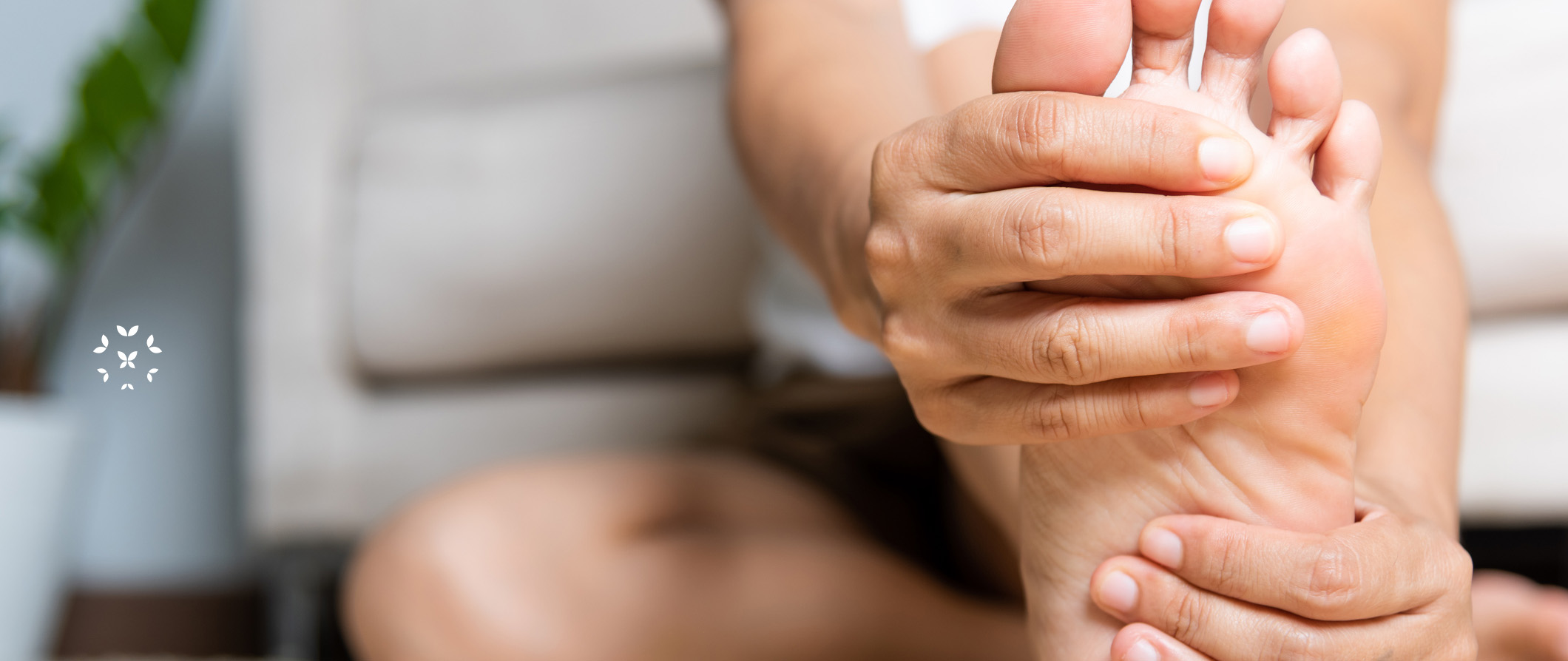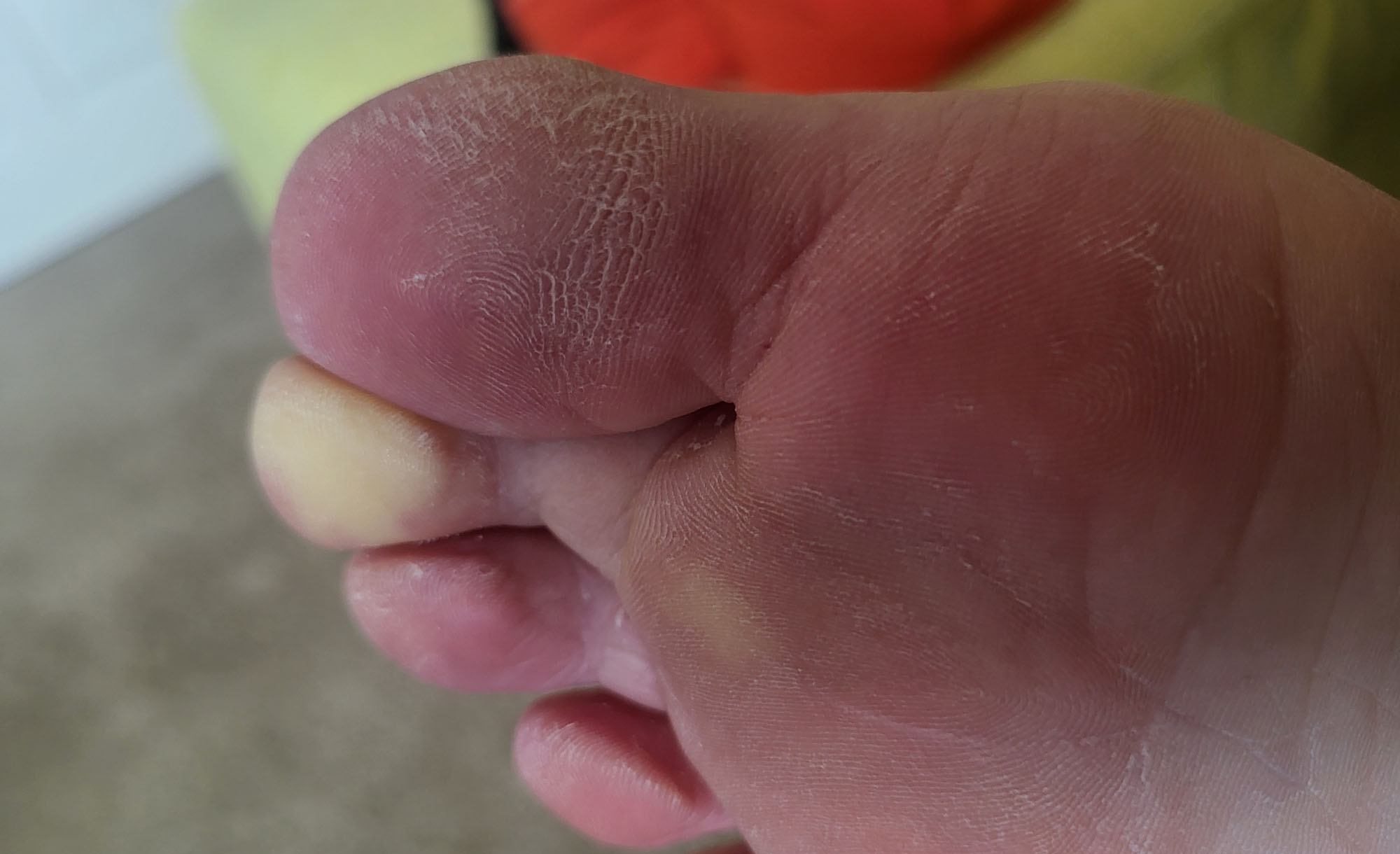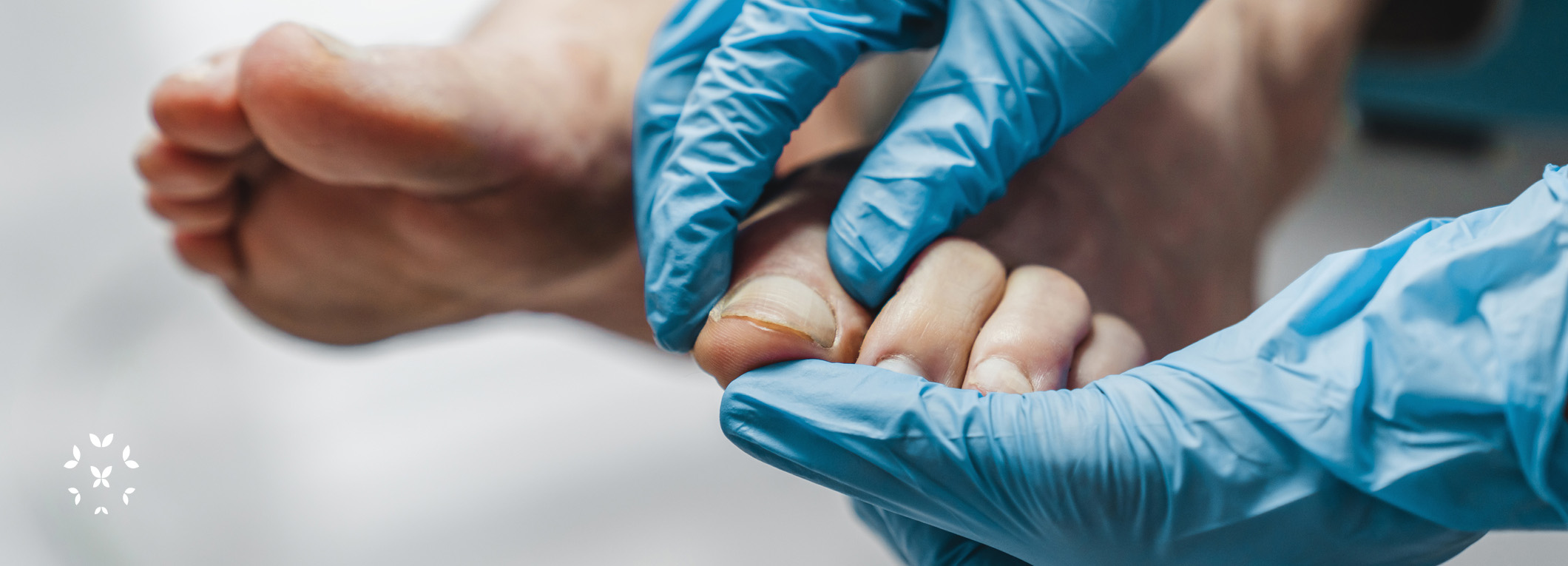Lupus and Your Feet
If you experience foot cramps and pain on a regular basis, you are not alone. A whopping 77% of those living with lupus say they regularly experience foot pain! To find out what causes lupus foot pain and what you can do about it, read on.
.
How Lupus Can Affect Your Feet: The 1-Minute Overview
For those living with lupus, foot problems are common. One study in the UK found that 29% of people with SLE at some point had to miss work due to foot or lower leg problems.
Symptoms vary greatly from person to person, but the most common can be divided into three groups:
- Foot pain and swelling;
- Vascular problems, like cold and discolored feet, and
- Skin rashes, sores and numbness.
These symptoms of inflammation and lupus damage can occur in any part of the body, however they can be even more acute in the feet. Why is that? Well, feet are an incredibly complex part of the human anatomy. They are meant to bear the entire weight of a person’s body and yet be flexible enough move in an astonishing variety of ways. They are engineering marvels – each with 26 bones, 29 muscles and 33 joints. Add to these all of the nerves and blood vessels that can also be the targets of lupus and it is no wonder that problems can occur … and when they do mobility and a person’s quality of life can be dramatically affected.
In general, the best ways to avoid or lessen this damage are the same as for almost any other aspect of lupus:
- Stick to your treatment plan and keep taking prescribed medications. That should reduce the systemic inflammation that can affect your feet and hopefully prevent the kinds of flares that might do the most damage.
- Eat a healthy diet with plenty of fluids and electrolytes so that joints remain hydrated and foot cramps can be avoided!
- Stay as physically active as possible with regular, gentle exercise in order to keep joints flexible and maintain overall health.
- Be on the lookout for any changes to how your feet look, feel and move so that new symptoms can be addressed quickly.
- See a physical therapist or podiatrist for more personalized advice and therapies.
Important Note: As always, consult with a healthcare provider before making any changes to your treatment plans.

Symptoms and Treatments
Pain and Swelling
Pain and swelling tend to go hand in hand – particularly in the small joints of the feet and ankles, which can lead to stiffness and difficulty walking. These symptoms can have many other causes, besides lupus, so it is important to check with a healthcare provider to get a correct diagnosis.
The pain and swelling is most commonly caused by the autoimmune inflammation of the joints themselves, sometimes called lupus arthritis. It can also be cause by inflammation of the tendons, known as tendinitis, or inflammation of the foot muscles, myalgia. It is important to note that more than one of these can occur to cause foot discomfort and possibly severe pain.
The normal pain and swelling of the feet can usually be treated successfully with:
- Resting and elevating feet;
- Cold wraps to reduce swelling or warm wraps to reduce pain;
- Non-steroidal anti-inflammatories (NSAIDs), Note: NSAIDs are not to be taken for those with lupus kidney damage.
Gout is a metabolic condition that is caused by formation of uric acid crystals in the joints of the foot that is not uncommon for those with lupus. It can cause pain and should be checked in order to ensure it is treated correctly if present.
Jaccoud’s type arthropathy, is a less common, but significant condition of joint deformation in the foot (or hands). This type of damage can cause toes to bend or twist in ways that can make walking difficult. In this case, orthopedic surgery may be necessary.
Vascular Issues:
These refer to the symptoms when lupus inflames, constricts or damages the blood vessels of the feet. The most common are types of vascular insufficiency that usually lead to things as benign as cold feet, but may also be more serious conditions like Raynaud’s phenomenon or in extreme cases, gangrene.

Raynaud’s Phenomenon is a condition that is frequently seen in those living with lupus. This disorder affects blood flow to certain parts of the body – usually the fingers and toes – causing them to feel numb and cold in response to cold temperatures or stress. During an attack, affected areas can turn white or blue and feel very cold or numb until circulation improves, leading to red, throbbing pain as blood flow returns. In extreme cases, Raynaud’s can lead to the amputation of toes.
With Raynauld’s, keep feet clean and warm – a warm soaking can do wonders! Also avoid dramatic changes in temperature such as going out in the winter without proper footwear, or in the summer when walking from hot pavement to air conditioned buildings. Flip-flops, though stylish and convenient, may not be a good idea.
Additionally, avoid smoking. That will improve circulation and reduce the risk of Raynaud’s.
Skin and Nerve Problems:
Lupus can also cause skin problems on the feet, most commonly rashes, sores or occasionally ulcers.
Discoid lupus, a type of lupus that causes chronic skin lesions, can result in sores and ulcers on the feet. These lesions can be painful, and they may take a long time to heal, increasing the risk of infections. Topical steroids and other specific treatments for cutaneous lupus are the most common therapies.
Lupus can also lead to peripheral neuropathy, a condition that damages the nerves of the foot and legs. This can cause numbness, tingling, or burning sensations in the feet, which can be both painful and debilitating.
Finally, diabetes mellitus is a common condition that can also affect those with lupus. Diabetes can restrict the flow of blood to the feet, leading to nerve damage or diabetic neuropathy, which can cause tingling, numbness and pain. There are many ways to treat diabetes, but getting an early diagnosis, managing insulin levels and maintaining a healthy diet are the most important!
.
The Takeaways
Managing lupus-related foot issues often requires a multifaceted approach. You should work closely with your rheumatologist and perhaps a podiatrist to develop a treatment plan tailored to your needs.
This plan might include medications to control inflammation and pain, physical therapy to maintain mobility, and protective footwear to prevent injury and reduce discomfort.
While living with lupus can be challenging, understanding its impact on your feet and taking proactive steps (pun intended!) to manage symptoms can help you maintain a better quality of life.
.
.
References
Otter, S. J., Kumar, S., Gow, P., Dalbeth, N., Corkill, M., Rohan, M., Davies, K. A., Pankathelam, S., & Rome, K. (2016). Patterns of foot complaints in systemic lupus erythematosus: A cross sectional survey. Journal of Foot and Ankle Research, 9(10). https://doi.org/10.1186/s13047-016-0143-8
Stevens, M.J., Walker-Bone, K., Culliford, D.J. et al. (2019). Work participation, mobility and foot symptoms in people with systemic lupus erythematosus: findings of a UK national survey. Journal of Foot and Ankle Research, 12(26). https://doi.org/10.1186/s13mmm
Stewart, S., Brenton-Rule, A., Dalbeth, N., Aiyer, A., Frampton, C., & Rome, K. (2019). Foot and ankle characteristics in systemic lupus erythematosus: A systematic review and meta-analysis. Seminars in Arthritis and Rheumatism, 48(5), 847–859. https://doi.org/10.1016/j.semarthrit.2018.07.002
.
Author: Greg Dardis, MS
Professor Dardis was the Chair of the Science Department at Marylhurst University, Assistant Professor at the American College of Healthcare Sciences and currently an Assistant Professor at Portland State University. His focus has been human biology and physiology with an interest in autoimmunity. Professor Dardis is also a former President of the Board of Directors of Kaleidoscope Fighting Lupus.
All images unless otherwise noted are property of and were created by Kaleidoscope Fighting Lupus. To use one of these images, please contact us at [email protected] for written permission; image credit and link-back must be given to Kaleidoscope Fighting Lupus.
All resources provided by us are for informational purposes only and should be used as a guide or for supplemental information, not to replace the advice of a medical professional. The personal views expressed here do not necessarily encompass the views of the organization, but the information has been vetted as a relevant resource. We encourage you to be your strongest advocate and always contact your healthcare practitioner with any specific questions or concerns

